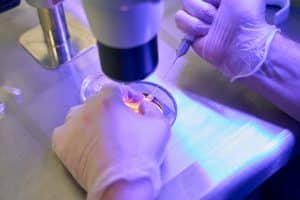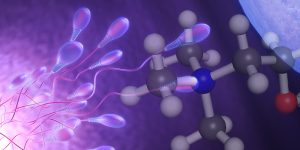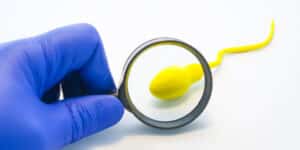Researchers at the University of Toronto have mapped the spatial distribution of around 700 long non-coding RNAs, also known as lncRNAs, in the testes. The team discovered many more lncRNAs in the testes than previously thought, suggesting that lncRNAs may play a more important role in male reproduction than previously thought. The research team began a genome-wide analysis of lncRNA localization patterns in the testes of a model organism commonly used in biomedical research: the fruit fly. They found that both the number of expressed lncRNA genes and their expression levels were far above expectations based on existing records and the assumption of their lack of relevance, partly due to the fact that lncRNAs do not code for proteins.
According to Matthew Jachimowicz, co-author of the study and a PhD student in molecular genetics at U of T’s Donnelly Centre for Cellular and Biomolecular Research, long non-coding RNAs are a controversial topic because it is not clear what functions most of them perform, if any. The uncertainty surrounding lncRNAs is due in part to the assumption that their expression is relatively low in all genomes. The results of the new study disprove this assumption and show that lncRNAs can play an important role in sperm evolution and development. The study was published in the journal Nature Communications.
RNAs in Testes and Sperm Function
Throughout the animal kingdom, developing sperm have the highest levels of gene expression, with lncRNA genes being expressed at even higher levels than coding genes and for much longer. The Y chromosome, which is uniquely expressed during sperm development, also poses a particular challenge for researchers as it has a number of unusual genetic features, including transposable elements, satellite repeats and pseudogenes. Transposable elements are DNA sequences that move from one area of the genome to another. Both satellite repeats and pseudogenes are non-coding, with the former consisting of larger stretches of repetitive DNA sequences, while the latter are structurally similar to genes.
The presence of these repetitive non-coding elements in the Y chromosome means that they are silenced at all stages of development outside of sperm production. However, they can pose risks to sperm as the non-coding elements become integrated into the genes, which can lead to mutations, sperm malfunction or abnormalities at birth. The research team found several examples of lncRNA genes that minimize potentially harmful transposable activities and keep them at a level that promotes the development of new genes instead of mutations in existing genes.
The research team also discovered a new type of lncRNA-based particle in seminal fluid that could affect reproduction and offspring. They hypothesize that the new lncRNA-based particles could be produced by both sperm and non-sperm cells, and that they may send complex intercellular signals. Many of the lncRNAs that were found had been overlooked in previous studies because they are not polyadenylated, according to Catherine Shao, first author of the study and a lab technician at the Donnelly Centre. This process adds a tail to the RNA molecule, which consists of a chain of adenine bases that stabilizes the molecule and prevents degradation. It turns out that most lncRNAs are not polyadenylated, which is why so many could not be detected using conventional methods. According to the researchers, the newly discovered lncRNA-based particles in particular have the potential to support the development of new RNA-based therapies.





